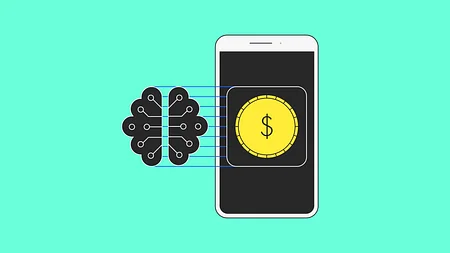Your brand matters more than your features

For anyone launching a new product, there are probably hundreds of questions on their mind. One of these is likely to be whether brand relevance or feature parity is more crucial to a product’s success.
This is taken from our Unfiltered newsletter. Subscribe now for a no BS, uncensored analysis of fintech news and hot topics delivered to your inbox each fortnight.
Feature parity is the aim of matching a feature set offered by an existing product or market benchmark. For new products whose purpose is feature parity, the chances are they’re trying to win by solving the same customer problems with the same solutions. Or worse still - they might be hoping to solve a different set of customer problems with the same list of features. And let’s not ignore the fact that it takes start-ups a long time to reach feature parity with competitors.
In more mature markets like the UK (where it seems as though there's already a fintech catering to every possible need) entering the market with a general banking product that aims for feature parity is an unlikely recipe for success. And that goes for big banks with existing brand presence, too.
While at a basic level, feature parity allows customers to compare apples to apples, it fails to account for the quality of the experience or desirability of the brand.
What makes a product successful? 🏆
Most cars have four wheels and an engine; every phone has a screen and a processor. But simply having the same list of features does not equate to a car or phone of equal quality or desirability.
Across every industry, it's no longer just price point and perceived quality or prestige that gives one product more desirability than another.
Today's customers are motivated by other levers, like innovation and ethics. They can go to any review platform to see if product performance and user experience actually live up to the bold marketing claims, which is ironically a comparison made easier by matching feature sets.
So let’s look beyond feature parity for a minute (and ignore financial hooks and commoditised offerings).
There are four immediate product elements that have an impact on a product’s chance of success:
- Performance
- Experience
- Brand
- Timing
It's no longer just price point and perceived quality or prestige that gives one product more desirability than another.
Performance and experience ⚙️
A lot has been written about UX as a differentiator, and with good reason.
We've all tried to navigate the menu system of a cheap TV: it's laggy, the information architecture is nonsensical and the programme names are oddly truncated. Yet, on paper, both a cheap TV and a market-leading device often make the same boasts about features.
Unlike an expensive, physical purchase, though – where the inertia of switching is greater – bank customers are (slowly) becoming less likely to stick around for a poor user experience. This is increasingly the case when competitors are removing the friction from switching to the point that it’s a no brainer.
The inadvertent effect on UX of aiming for feature parity is that those recognised ‘features’ often perpetuate a view of banking built around the internal structure of those organisations - “we do current accounts, we do loans, we send a statement every month” and so on.
One of the reasons challenger banks were able to disrupt the industry through improved UX is that, while they may be addressing the same customer problems, they’re not doing this by simply digitising existing services.
Instead, they provide customers with outcomes that fit around their own mental model of money, rather than forcing the customer to fit their needs around the bank's internal view.
When it comes to product experience, the most loved products also add a baseline of micro-interactions that bring moments of joy to repetitive actions, becoming hallmarks of the brand. (I dive into signature moments in more detail in this blog.)
Over time, the compound effect of these little dopamine hits is greater customer affection for the product. It takes an experience from being purely transactional to momentarily emotional, making the user less likely to switch and more likely to recommend.
Brand 🎨
Moving beyond comparable features and solving customer problems in a better way while nailing the customer experience are important, sure. But these tick boxes pale in comparison to the impact that brand has on whether it will sink or swim.
Customers have begun to recognise the challenger bank 'look and feel' as short-hand for better experience and performance. This has led to something of a fintech 'blanding', as new entrants carve out their identity using a familiar minimal aesthetic, soft corners, bright accent colours, typographic logos and ‘un-banky’ language.
For products that aim for feature parity, adding brand mimicry as a goal only serves to compound the problem.
New businesses can’t afford to see brand as an afterthought in order to look and sound ‘right’. Instead, they must see it as an opportunity to build a product around a purpose from day one. It’s this that will give their product a greater chance of answering a genuine unmet customer need, and help them feel more authentically part of the culture they’re created for.
So if a product is designed in this way, is feature parity even a viable concern?
My unfiltered opinion
Any brand preparing to launch a product clone in a mature fintech market and aiming purely for feature parity will struggle to win customers without incentives, huge advertising spend or a loyal customer base.
Feature parity does not lead to product parity. Even if you've created a joyful user experience that performs better than established digital banks, you'll still face an uphill battle to win customers.
More crucial to a new product's success is the approach the team takes. Begin by solving an underserved customer problem and build a brand with real purpose around this.
Recent success stories show newer players creating a brand that speaks to people who have previously been underserved by financial services. They leverage a deep understanding of that culture to drive not just product, but marketing – like Cash App’s mastery of social platforms and influencer power, for example.
In order to nail the final magic element - timing - new start-ups should shift their focus away from feature parity and instead build brands that offer an authentic reaction to innate societal tensions.




